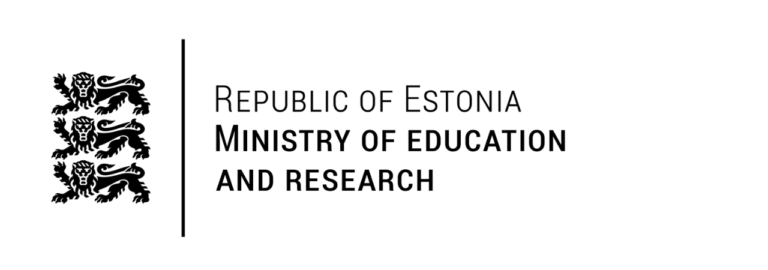In response to the expanding role of AI, Estonia is advancing its educational methods, placing importance on AI literacy among educators. The Education and Youth Board has rolled out a teacher training course, “How to make AI work for you”. The comprehensive programme consists of 14 hours of online study and an additional 5 hours of independent study, designed to integrate AI solutions within the teaching and learning framework.
“Developing this training course was necessary since AI is already used extensively in a number of fields, including education,” explained one of the developers of the training course, Ingrid Maadvere. “This has raised many practical questions among students and teachers requiring further discussion. For example, what can AI offer teachers and students in regard to preparing learning materials, conducting lessons and independent study? How do you use AI responsibly and ethically? How can you best ask things from an AI system? Do AI systems learn, and if yes, how? And so on.” She added, “We’re getting more questions than answers every day, and actually giving any definitive answers in a rapidly changing situation just isn’t possible. With this new course, however, we have at least created the opportunity for teachers to discuss the matter at length and, with the aid of experts, figure out how to use AI best for learning.”
The course blends artificial intelligence with educational frameworks, enabling teachers to test various AI-supported learning scenarios. These scenarios are designed to enhance students’ learning strategies, mental and physical health, and digital competency, all in compliance with copyright law and the GDPR. Teachers receive materials outlining different AI uses in teaching, such as activating prior knowledge, soliciting feedback, and developing information retrieval and assessment skills. They also gain insights into various AI applications, including guidance on GDPR considerations.
AI and GDPR
Meeri Sild, educator and one of the course developers, acknowledges the challenge of testing AI scenarios due to GDPR restrictions. The rapid growth of new AI tools and platforms is met with increasingly stringent usage restrictions. “Most AI applications are permitted for users over 18, or sometimes 13, with parental consent,” Sild explains. The evolving rules around AI’s role and recognition in educational content creation, whether as a method or an author, are also discussed. The course is currently in its testing phase, with 60 teachers experimenting with at least one AI scenario in their classes. The course has just ended its piloting phase, where all 53 teachers experimented with at least one AI scenario in their class.
AI training developers and trainers Heily Epro-Volmer and Meeri Sild recommend that teachers treat AI as a helper that we can develop while it also helps us develop. Heily added that finding the right environments and being up to date with their developments can make a teacher’s job much easier. Meeri, however, said that artificial intelligence is here to stay, and ignoring it will do no good whatsoever. She believes that schools have to start thinking about how to take advantage of AI, how to make changes to teaching and how to help students adapt to new studying practices. “Asking the right questions from AI and using it as a learning partner are skills that our students will be needing in the coming years,” she said.
Integrating AI into teaching scenarios
As part of their training, teachers experimented with how to use AI to:
- do group exercises with students in health and social studies classes and create presentations on how the family concept has changed over time;
- teach about English conditional sentences;
- create and design nature guide text;
- introduce the topic of nuclear energy to students;
- plan video projects, create scenarios and generate scenes;
- teach the topic “Carbon as a pure substance” in a Grade 9 chemistry lesson;
- structure a research paper;
- teach students on how and what to ask in order to get adequate and exhaustive answers;
- illustrate a science fiction story.
Framework training courses
In total, there will be four training courses in the Framework training series:
- Framework and presentations, or how to ensure students aren’t just sleeping with their eyes open;
- Framework and digital self-tests, or how to use Kahoot wisely;
- Framework and learning from mistakes, or let’s say ‘no’ to the eraser;
- Framework and AI: How to make AI work for you.
Condensed webinars were provided to address the challenge of limited time among educators, offering a practical overview of AI developments. These sessions were led by Piret Lehiste, a seasoned educational technologist at the Estonian Academy of Music and Theatre and a recognized expert in digital literacy. Lehiste, who regularly incorporates various AI solutions in her work, shared her extensive experiences on effectively using AI in teaching, the key aspects to focus on, and the broader implications of AI in the field of digital literacy.
AI tips for teachers
- Start small. Don’t try to harness all the power of artificial intelligence at once.
- Set a clear goal for yourself. Are you trying to use AI in order to generate ideas, create learning resources, or diversify the learning process?
- Experiment on your own and/or ask for advice from a close colleague and find the best solution for you/your students.
- Don’t forget that at the end of the day YOU are the teacher. AI can certainly be a powerful tool to assist you, but it can’t replace you as the leader of the learning process and supporter of your students.
- Keep a critical mind when using AI. AI doesn’t actually possess knowledge – it can make mistakes or fabricate information.
- Do not enter any personal details or student work into AI-based applications without the consent of the child and their parents.
- Always check the terms of use and privacy policy of different apps, especially if you plan to use them with your students.
by Piret Lehiste, educational technologist
The course "How to make AI work for you" was developed by the Education and Youth Board in collaboration with well-known experts in the field. The team includes Ingrid Maadvere, an educational technologist from Gustav Adolf Gymnasium, Meeri Sild, an educational technologist and teacher from Tallinn Lilleküla Gymnasium, and Helly Epro-Volmer, a teacher at Harkujärve Basic School. The project was led by Kerli Požogina, the project leader at the Education and Youth Board training centre. The training initiative is part of the Safer Internet project, co-funded by the European Union.





